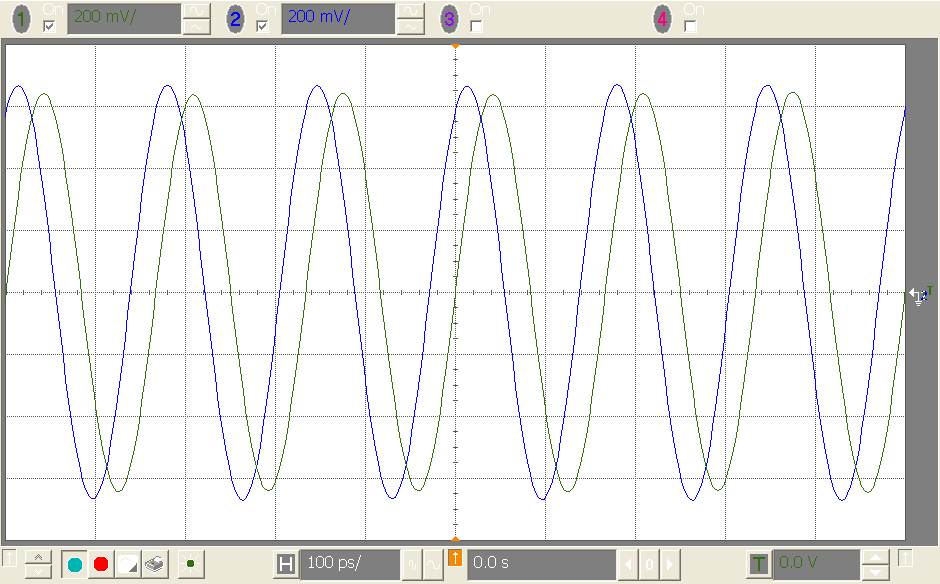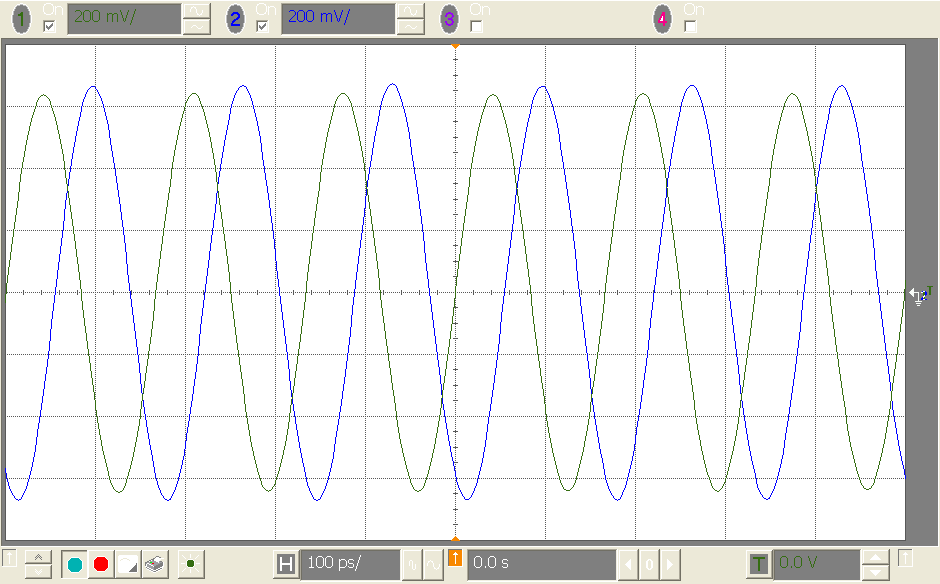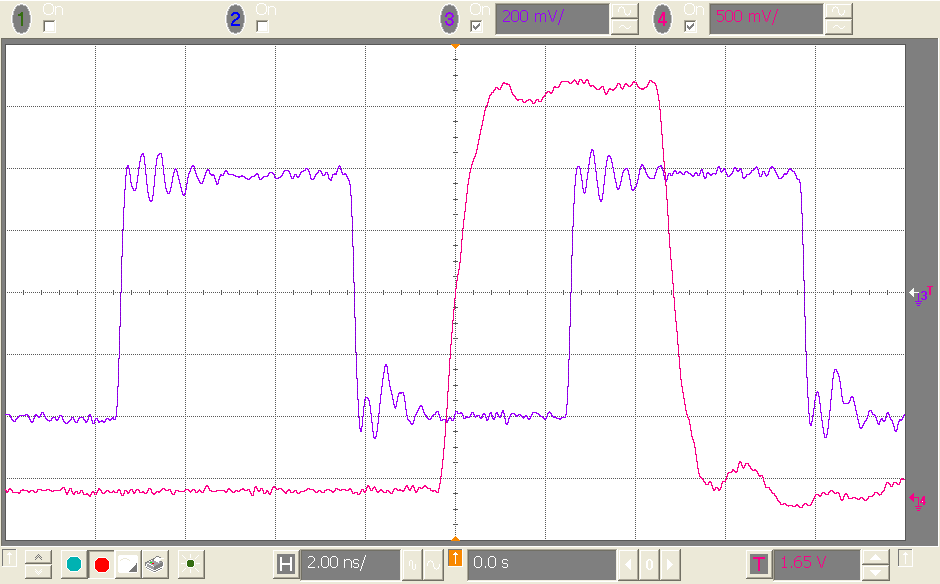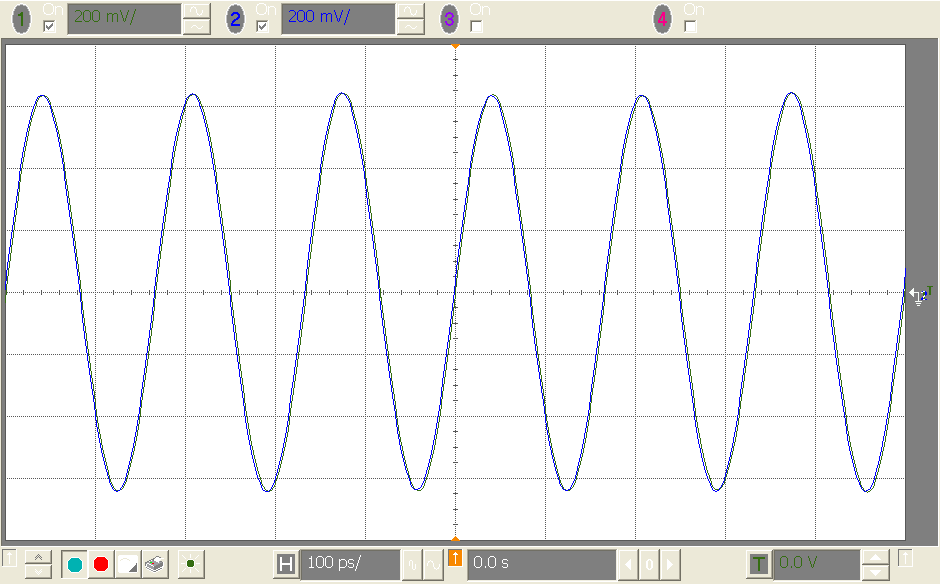SNAU273 December 2022 LMX2820
3.3 Category 3 SYNC Example
When the LMX2820 configuration comes to a fractional channel, the category of SYNC is likely 3, if not 4.
- M = 1
- fOUT is not an integer multiple of fOSCIN
- fOSCIN is not an integer multiple of fOUT
- fOSCIN is less than 200 MHz
 Figure 3-14 Category 3 SYNC (Before SYNC)
Figure 3-14 Category 3 SYNC (Before SYNC)Similar to Category 2 SYNC, we must put the LMX2820 in SYNC mode (set PHASY_SYNC_EN = 1) and activate the PSYNC pin (set INPIN_IGNORE = 0). Furthermore, we also must "reserve" some delay time for the synchronization engine to align phase. This delay time, as defined in register MASH_RST_COUNT, must be sufficiently large or otherwise the synchronization engine is not able to complete phase alignment before time out. Delay time = MASH_RST_COUNT × 2CAL_CLK_DIV / fOSCIN. A 500-µs delay time is recommended. This is not an absolute wait time that adds to the total time taken for phase synchronization (t1 in Figure 1-1). Depending on the LMX2820 configuration, the phase synchronization engine may actually require a 100-µs or 200-µs delay time, for example. That would mean t1 is 100 µs shorter if, for a certain configuration, the phase synchronization engine only requires a 100-µs instead of a 200-µs delay time.
As for the SYNC pulse, this example requires a time-critical SYNC pulse to phase synchronize the LMX2820 devices. We cannot use the Toggle PSYNC pin button in TICS Pro anymore.
 Figure 3-15 Unable to SYNC With Non-Time Controlled SYNC Pulse
Figure 3-15 Unable to SYNC With Non-Time Controlled SYNC PulseThe LMK04832 device in Figure 3-1 is used to generate the time-critical SYNC pulse.
 Figure 3-16 Time-Critical SYNC Pulse
Figure 3-16 Time-Critical SYNC PulseAfter synchronization with a time-critical SYNC pulse, both LMX2820 outputs are in phase again.
 Figure 3-17 Category 3 SYNC (After SYNC)
Figure 3-17 Category 3 SYNC (After SYNC)As a reminder, toggling the POWERDOWN bit, a RESET, or a VCO calibration requires re-synchronization with a time-critical SYNC pulse.